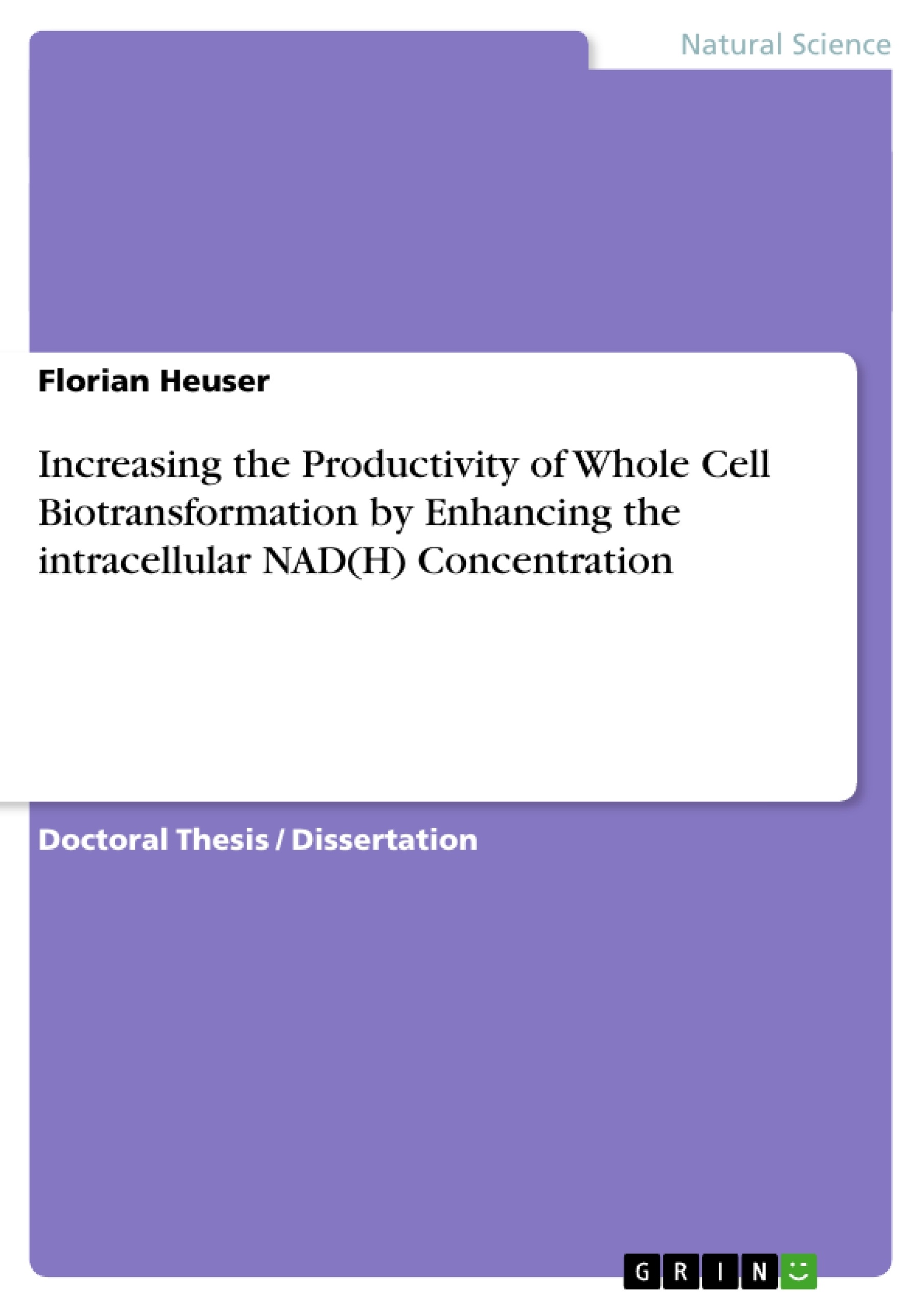The aim of this work was to limit the intracellular NAD turnover and to increase the intracellular NAD concentration in Escherichia coli in order to construct a strain characterized by higher productivity and improved long-term stability in the reductive whole-cell biotransformation. To this end, first the genes yrfE and yjaD were deleted, which code for the NADH-pyrophosphatases that probably play a part in intracellular NAD degradation. After deletion of these genes, the specific activity of the NADH-pyrophosphatase in the raw extract was reduced by 70%. By overexpressing the genes pncB and nadE from the NAD biosynthesis it was possible to double the intracellular NAD concentration. The joint overexpression of the two genes increased the NAD pool by a factor of seven.
A recombinant strain of E. coli for obtaining mannitol from fructose was the reference system for studying whether the mutations in the NAD metabolism influenced the long-term stability of whole-cell transformations. Here, fructose was reduced to mannitol by a mannitol dehydrogenase from Leuconostoc pseudomesenteroides. The cofactor NADH was regenerated by a formate dehydrogenase from Mycobacterium vaccae N10. The uptake of fructose was made possible by a glucose facilitator from Zymomonas mobilis. In the present study, it was foand that during the biotransformation the cells lost NAD(H) via a permeabilized cell membrane. The cause of cell permeabilization was foand to be an accumulation of mannitol in the cell, which led to bursting of the cell due to increased osmotic pressure. By cloning a putative mannitol transport gene from L. pseudomesenteroides, it was possible to increase long-term productivity of the recombinant E. coli, so that after three days of biotransformation the mannitol yield was increased by 20%. Biochemical characterization revealed that the putative mannitol transporter is a secondary carrier specific for fructose.
Inhaltsverzeichnis (Table of Contents)
- Abstract
- Introduction
- Materials and Methods
- Bacterial Strains and Plasmids
- Media and Growth Conditions
- Enzymatic Assays
- DNA Techniques
- Protein Analysis
- Whole-Cell Biotransformation
- Analytical Methods
- Results
- Deletion of the genes yrfE and yjaD
- Overexpression of pncB and nadE
- Mannitol Biotransformation
- Influence of Mannitol Transport on the Stability of Whole-Cell Biotransformation
- Cloning and Characterization of a Putative Mannitol Transporter from Leuconostoc pseudomesenteroides
- Discussion
Zielsetzung und Themenschwerpunkte (Objectives and Key Themes)
This study aimed to increase the intracellular NAD(H) concentration in Escherichia coli to enhance the productivity and long-term stability of reductive whole-cell biotransformations. The research focused on manipulating the NAD metabolism within the cells, specifically by targeting NAD degradation and biosynthesis pathways.
- Enhancement of NAD(H) pool in Escherichia coli for biotransformation
- Impact of NAD turnover and concentration on whole-cell biotransformation productivity
- Investigation of NADH-pyrophosphatase activity and its role in NAD degradation
- Optimization of NAD biosynthesis through gene overexpression
- Study of the influence of mannitol transport on the stability of whole-cell biotransformation
Zusammenfassung der Kapitel (Chapter Summaries)
The introductory chapter provides an overview of the research area, highlighting the significance of NAD(H) in biotransformations and the challenges associated with maintaining high intracellular NAD levels. The Materials and Methods section details the experimental procedures employed, including bacterial strains, plasmids, growth conditions, enzymatic assays, DNA techniques, protein analysis, whole-cell biotransformation, and analytical methods.
The Results chapter presents the findings of the study, including the effects of deleting the genes yrfE and yjaD on NADH-pyrophosphatase activity, the impact of overexpressing pncB and nadE on the intracellular NAD concentration, and the influence of mannitol transport on the stability of whole-cell biotransformation. The chapter also discusses the cloning and characterization of a putative mannitol transporter from Leuconostoc pseudomesenteroides.
The Discussion chapter provides a comprehensive interpretation of the results, highlighting the significance of the findings in the context of improving whole-cell biotransformation processes. It discusses the potential applications of the engineered strains and suggests future research directions.
Schlüsselwörter (Keywords)
The keywords of this study include: whole-cell biotransformation, NAD(H), Escherichia coli, NADH-pyrophosphatase, NAD biosynthesis, mannitol, mannitol dehydrogenase, formate dehydrogenase, glucose facilitator, mannitol transporter, long-term stability, productivity.
- Citar trabajo
- Florian Heuser (Autor), 2007, Increasing the Productivity of Whole Cell Biotransformation by Enhancing the intracellular NAD(H) Concentration, Múnich, GRIN Verlag, https://www.grin.com/document/137750



